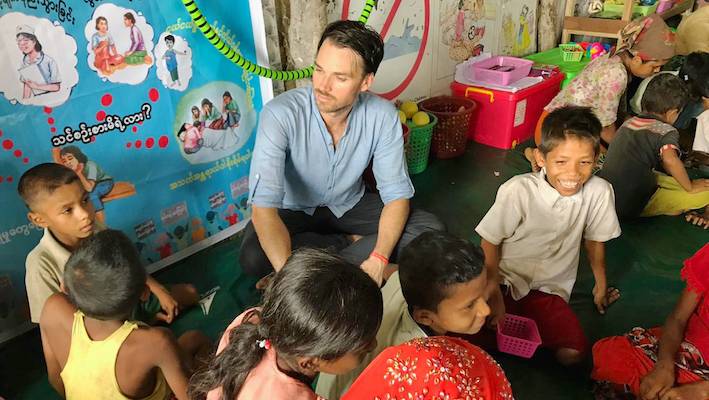
Save The Children director of advocacy, communications, campaigns and media Andy Nilsen has been stationed in Myanmar for the last four-and-a-half years to assist with the Rohingya refugee crisis. Many Muslim Rohingya people have been massacred and hundreds of thousands have been displaced by the Buddhist majority.
In two weeks Nilsen was supposed to travel to a camp for displaced Rohingyas in Sittwe, but recent outbreaks in the Rakhine state have limited his movement.
Nilsen spoke to Crikey‘s Amber Schultz about the intricacies of coordinating pandemic messaging in refugee camps, the fear of an outbreak in cramped conditions, and the ongoing threat of funding cuts amid the deepest global recession in decades.
Sittwe refugee camp is a forgotten side of the Rohingya refugee crisis.
Cox’s Bazar — the largest refugee camp in the world — has made news for reaching its third anniversary, but the crisis has been going on for much longer. A lot of people have been stuck in the Sittwe camp for seven years, and more than 30,000 children have been born there since 2012.
Myanmar has so far escaped the worst of the COVID-19 crisis but, with limited international travellers and just a few hundred cases, outbreaks of the virus are still a real concern. It’s simply not possible to socially distance within camp settings.
People in the camps really rely on Save the Children along with other organisations for food and lifesaving services. We have to make sure we’re not risking our own staff or bringing COVID-19 into the settlements. We have a skeleton staff maintaining services, we use personal protective equipment and we have cancelled non-essential services.
Even then, there’s still a degree of scrambling to make sure everything is in place. There are limitations in a country like Myanmar, a place like Sittwe and in a camp-like setting. There’s only so much that can be done to maintain a level of safety.
One of the most important things we’re doing is making sure people know how to protect themselves against the spread of coronavirus.
Good communication has saved lives, and bad communication leads to higher death rates. Communication is a matter of life and death.
We realised our teams weren’t going to be able to be in the community handing out information and giving face-to-face advice. We had to use social media. Back in 2012, just 1% of the population had access to the internet, but today it has one of the highest internet penetration rates so social media has really taken off, and Facebook is really popular.
It’s been a big challenge as communications director, and it’s a busy, interesting role. We’ve been creating communication materials that people can understand easily on social distancing and hand washing.
We’re making content which is meant to be delivered on a mobile phone, with more pictures than text, animations, audio and low-tech methods like audio files which can be played from speakers mounted to a car. Our main focus groups are people with low literacy, people with disabilities, and people who might not be able to see very well.
Of course, we’ve had to establish social media monitoring and myth-busting because there are a whole bunch of myths. Many misinformation messages are coming from religious leaders saying their religion will protect them from COVID-19. This is also an election year, so there are special interest groups that want to create chaos and spread rumours.
We anticipate that it is going to be a tough couple of years for the charity and humanitarian sector. We hope either citizens or the government would see beyond COVID-19 and see the value of having a strong foreign aid program, but there will be a lot more competing pressures in budgets over the coming years.







Crikey is committed to hosting lively discussions. Help us keep the conversation useful, interesting and welcoming. We aim to publish comments quickly in the interest of promoting robust conversation, but we’re a small team and we deploy filters to protect against legal risk. Occasionally your comment may be held up while we review, but we’re working as fast as we can to keep the conversation rolling.
The Crikey comment section is members-only content. Please subscribe to leave a comment.
The Crikey comment section is members-only content. Please login to leave a comment.